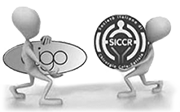Vedi anche colite spastica, colite mucosa.
Comune disordine funzionale caratterizzato da una combinazione variabile, negli individui affetti, di dolore, distensione addominale, diarrea e/o stipsi, diversa anche nello stesso soggetto in diversi periodi della vita. Il dolore è essenzialmente di tipo colico. Non sono conosciute cause organiche e la diagnosi deve essere necessariamente posta, per esclusione, dopo opportuni accertamenti strumentali (vedi colonscopia, colonscopia virtuale) (tabb 13 e 14).
- Collins SM, Vallance B, Barbara G, Borgaonkar M. Putative inflammatory and immunological mechanisms in functional bowel disorders. Baillieres Best Pract Res Clin Gastroenterol 1999;13(3):429-36;
- Drossman DA, Corazziari E, Talley NJ, Thompson WG, Whitehead WE. Rome II: a multinational consensus document on functional gastrointestinal disorders. Gut 1999; 45 Suppl II :II1–II81
- Bercik P, Verdu EF, Collins SM. Is irritable bowel syndrome a low-grade inflammatory bowel disease? Gastroenterol Clin North Am
2005;34(2):235-45;
- Quigley EM. Irritable bowel syndrome and inflammatory bowel disease: interrelated diseases?Chin J Dig Dis 2005;6(3):122-32;
- Shea-Donohue T, Cook IJ, de Giorgio R, Tonini M, Dent J, Costa M, Grundy D, Sanders KM, Schemann M, Smith TK, Brookes SJ;
Varenna Group. A teaching module on irritable bowel syndrome. Neurogastroenterol Motil 2005;17 Suppl 3:20-40;
- Patel SM, Stason WB, Legedza A, Ock SM, Kaptchuk TJ, Conboy L, Canenguez K, Park JK, Kelly E, Jacobson E, Kerr CE, Lembo
AJ. The placebo effect in irritable bowel syndrome trials: a meta-analysis. Neurogastroenterol Motil 2005;17(3):332-40;
- Corsetti M, Ogliari C, Marino B, Basilisco G. Perceptual sensitivity and response bias during rectal distension in patients with irritable bowel syndrome. Neurogastroenterol Motil 2005;17(4):541-7;
- Camilleri M. Mechanisms in IBS: something old, something new, something borrowed… Neurogastroenterol Motil 2005;17(3):311-6;
- Andresen V, Bach DR, Poellinger A, Tsrouya C, Stroh A, Foerschler A, Georgiewa P, Zimmer C, Mönnikes H. Brain activation responses to subliminal or supraliminal rectal stimuli and to auditory stimuli in irritable bowel syndrome. Neurogastroenterol Motil
2005;17(6):827-37;
- Gwee KA. Irritable bowel syndrome in developing countries–a disorder of civilization or colonization? Neurogastroenterol Motil.
2005 Jun;17(3):317-24;
- Reinders CI, Herulf M, Ljung T, Hollenberg J, Weitzberg E, Lundberg JO, Hellström PM. Rectal mucosal nitric oxide in differentiation of inflammatory bowel disease and irritable bowel syndrome. Clin Gastroenterol Hepatol 2005;3(8):777-83;
- Naliboff BD. Towards a nondualistic approach to multisystem illness. Am J Gastroenterol 2007;102(12):2777-80;
- Saito YA, Talley NJ. Genetics of irritable bowel syndrome. Am J Gastroenterol 2008;103(8):2100-4;
- Alpers DH. Multidimensionality of symptom complexes in irritable bowel syndrome and other functional gastrointestinal disorders. J Psychosom Res 2008;64(6):567-72;
- Gunnarsson J, Simrén M. Efficient diagnosis of suspected functional bowel disorders. Nat Clin Pract Gastroenterol Hepatol 2008;5
(9):498-507;
- Zijdenbos IL, de Wit NJ, van der Heijden GJ, Rubin G, Quartero AO. Psychological treatments for the management of irritable bowel syndrome. Cochrane Database Syst Rev 2009;(1):CD006442;
- Casiday RE, Hungin AP, Cornford CS, de Wit NJ, Blell MT. Patients’ explanatory models for irritable bowel syndrome: symptoms and treatment more important than explaining aetiology. Fam Pract 2009;26(1):40-7;
- Raahave D, Christensen E, Loud FB, Knudsen LL. Correlation of bowel symptoms with colonic transit, length, and faecal load in functional faecal retention. Dan Med Bull 2009;56(2):83-8.
Tab. 9: Criteri di Roma III: Stipsi cronica idiopatica e Sindrome dell’intestino irritabile
ROME III CRITERIA
FUNCTIONAL CONSTIPATION
Two or more of the following for at least 3 months with symptom onset at least 6: straining during ≥25% of defecations:
Lumpy or hard stools for 25% of defecations
Sensation of incomplete evacuation for ≥ 25% of defecations Sensation of anorectal obstruction/blockade for ≥ 25% of defecations
Manual maneuvers to facilitate ≥ 25% of defecations (e.g., digital evacuation, pelvic floor
support)
Fewer than 3 defecation per week
Additional criteria: stool rarely loose without use of laxatives
criteria insufficient to indicate irritable bowel syndrome
CRITERI DI ROMA III
STIPSI CRONICA IDIOPATICA
Due o più dei seguenti disturbi da almeno 3 mesi quando i sintomi si associno a difficoltà/sforzo/affaticamento nel ≥25% delle defecazioni da
almeno 6 mesi:
Feci dure o piccole (caprine) nel ≥25% delle defecazioni
Senso di incompleta defecazione nel ≥25% delle defecazioni
Sensazione di ostacolo/ blocco anorettale nel ≥25% delle defecazioni
Manovre manuali (digitazioni) per facilitare nel ≥25% delle defecazioni
Meno di 3 defecazioni per settimana.
Criteri aggiuntivi: Feci raramente formate senza il ricorso a lassativi
Assenza di criteri sufficienti per indicare una SII.
IRRITABLE BOWEL SYNDROME (IBS)
Recurrent abdominal pain/discomfort ≥ 3d/mo for
the past 3 mo, associated with 2 of the following:
Improvement with defecation
Onset associated with change in stool frequency
Onset associated with change in stool form
SINDROME da INTESTINO IRRITABILE (SII)
Dolore e/o distensione addominale che ricorrono 3 gg/mese negli ultimi 3 mesi, associato con 2 dei seguenti fatti:
Miglioramento con la defecazione
Insorgenza in associazione con variazioni dell’alvo
Compaiono in associazione con variazioni della forma delle feci.
(Traduzione italiana qui proposta per la validazione).
Gastroenterology 2006:130:1480-91
Tab. 10: Classificazione
(cfr. Bris della SII in base al carattere prevalente delle feci
stol Fecal Scale, vedi APPENDICE)
CLASSE: SII con stipsi (SII-C)
CARATTERISTICHE delle FECI:
feci dure o bozzolute in ≥ 25% e feci sfatte o acquose in < 25% delle defecazioni
CLASSE: SII con diarrea (SII-D)
CARATTERISTICHE delle FECI:
feci sfatte o acquose in ≥ 25% e feci bozzolute in < 25% delle defecazioni
CLASSE: SII mista (SII-M)
CARATTERISTICHE delle FECI:
feci dure o bozzolute in ≥ 25% e feci sfatte o acquose in ≥ 25% delle defecazioni
CLASSE: SII non sottotipo
CARATTERISTICHE delle FECI:
anormalità delle feci non compatibili con i criteri SII-C, IBS-D o IBS-M.
Tratto da: Gastroenterology 2006:130:1480-91
‹ Back to the index






